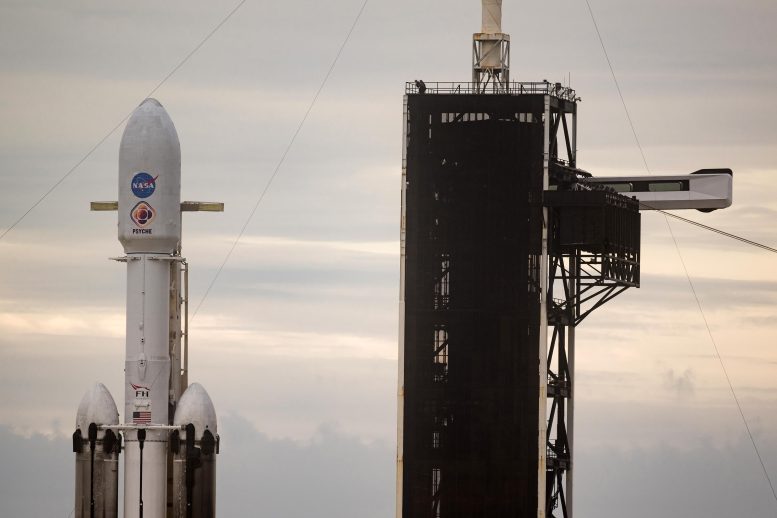
A SpaceX Falcon Heavy rocket with the Psyche spacecraft onboard is seen at Launch Complex 39A as preparations continue for the Psyche mission, Wednesday, October 11, 2023, at NASA’s Kennedy Space Center in Florida. NASA’s Psyche spacecraft will travel to a metal-rich asteroid by the same name orbiting the Sun between Mars and Jupiter to study its composition. The spacecraft also carries the agency’s Deep Space Optical Communications technology demonstration, which will test laser communications beyond the Moon. Credit: NASA/Aubrey Gemignani
Weather officials with Cape Canaveral Space Force Station’s 45th Weather Squadron predict a 40% chance of favorable weather conditions for the launch of NASA’s Psyche mission at 10:19 a.m. EDT Friday, October 13, on a SpaceX Falcon Heavy rocket from Launch Complex 39A at Kennedy Space Center in Florida.
Showers and storms are expected at the spaceport late Thursday, lasting through the Friday launch window. Primary weather concerns at launch are the anvil cloud, thick cloud layers, and cumulus cloud rules.
The next available launch window occurs at 10:24 a.m. EDT Saturday, October 14. Weather officials forecast a 70% of favorable conditions for this launch opportunity, with the cumulus cloud rule as the primary weather concern.
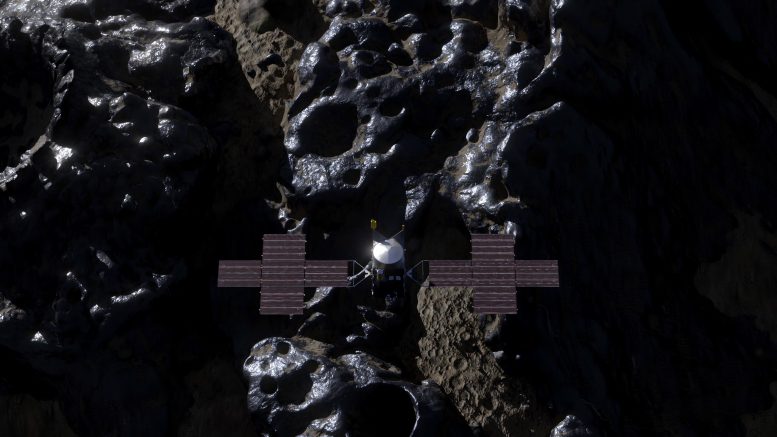
NASA’s Psyche mission aims to explore the metal-rich asteroid named Psyche, believed to be the exposed core of an early planet from our solar system’s formative years. This endeavor seeks insights into the early processes of planet formation and the mysteries of Earth’s own core. Credit: NASA
NASA’s Psyche Mission
NASA’s Psyche mission is a pioneering endeavor aiming to journey to a unique metal-rich asteroid, named Psyche, which orbits the Sun between Mars and Jupiter. This asteroid stands out because, unlike most asteroids that are rocky or icy, Psyche is primarily made of metal and is thought to be the exposed core of an early planet, a relic from the early solar system.
The mission’s primary objective is to delve deeper into understanding the building blocks of planet formation by studying Psyche’s metallic asteroid. By examining this celestial object, scientists hope to garner insights into the turbulent beginnings of planets and also learn more about Earth’s own core.
The spacecraft will be equipped with a suite of state-of-the-art scientific instruments, designed to map and study the asteroid’s surface and its composition. The mission not only offers a window into the violent history of collisions and accretion that created terrestrial planets, but also holds potential clues about the Earth’s core, which is otherwise inaccessible for direct observation.
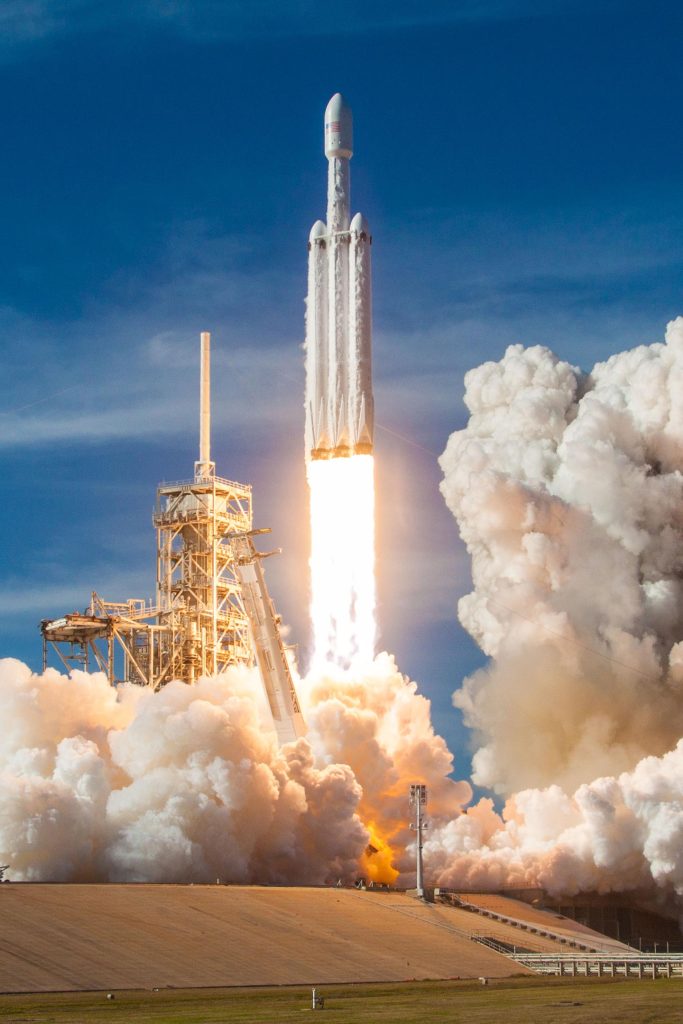
As one of the most powerful operational rockets, SpaceX’s Falcon Heavy stands out with its ability to carry large payloads and its innovative reusable design. Its maiden flight famously sent Elon Musk’s Tesla Roadster into space, demonstrating its unique capabilities. Credit: SpaceX
SpaceX’s Falcon Heavy
SpaceX’s Falcon Heavy is one of the most powerful operational rockets in the world, designed and manufactured by SpaceX, the space company founded by Elon Musk. It is essentially a larger variant of the Falcon 9 launch vehicle and consists of three Falcon 9 first-stage cores joined together, with each core containing nine engines. This gives the Falcon Heavy a total of 27 Merlin engines, allowing it to lift more than twice the payload of the next closest operational vehicle, the Delta IV Heavy, at one-third the cost.
Built with reusability in mind, the Falcon Heavy’s side boosters can return to landing sites rather than falling into the ocean like traditional rocket boosters. This innovative approach drastically reduces the cost of space missions.
Initially conceived to facilitate potential crewed missions to the Moon or Mars, the Falcon Heavy’s vast payload capacity opens up a broad spectrum of possibilities, from launching large satellites to deep space missions. Its maiden flight in 2018 was particularly notable for sending Elon Musk’s personal Tesla Roadster into space, showcasing both its capabilities and SpaceX’s penchant for dramatic flair.

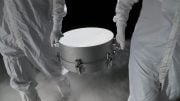
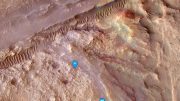






Be the first to comment on "Rocket Weather Roulette: 40% Favorable Skies for NASA’s Psyche Launch"